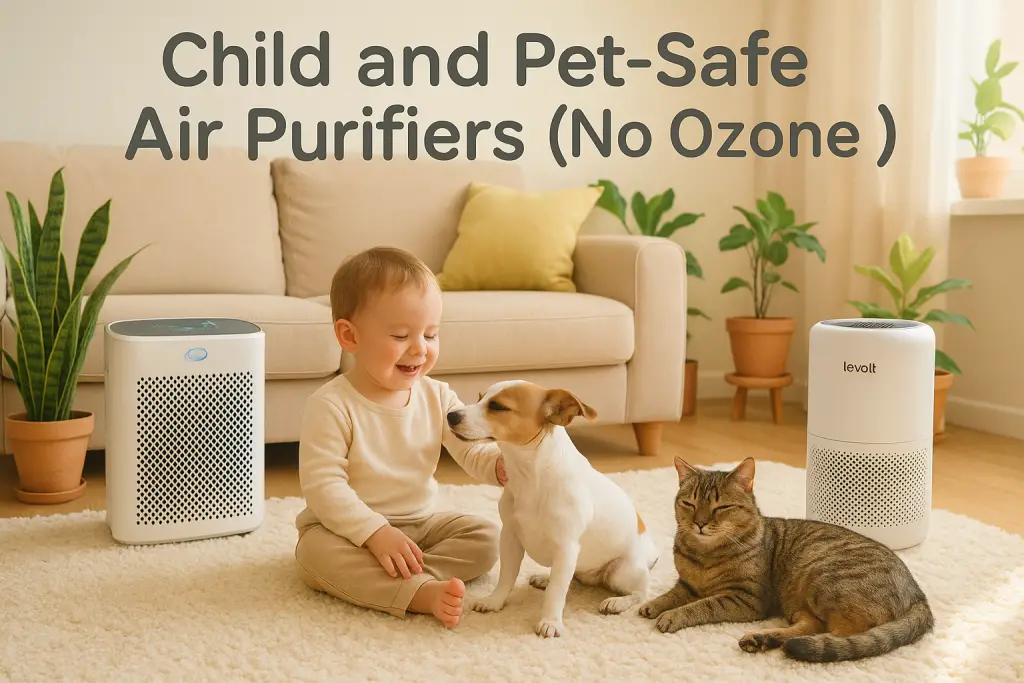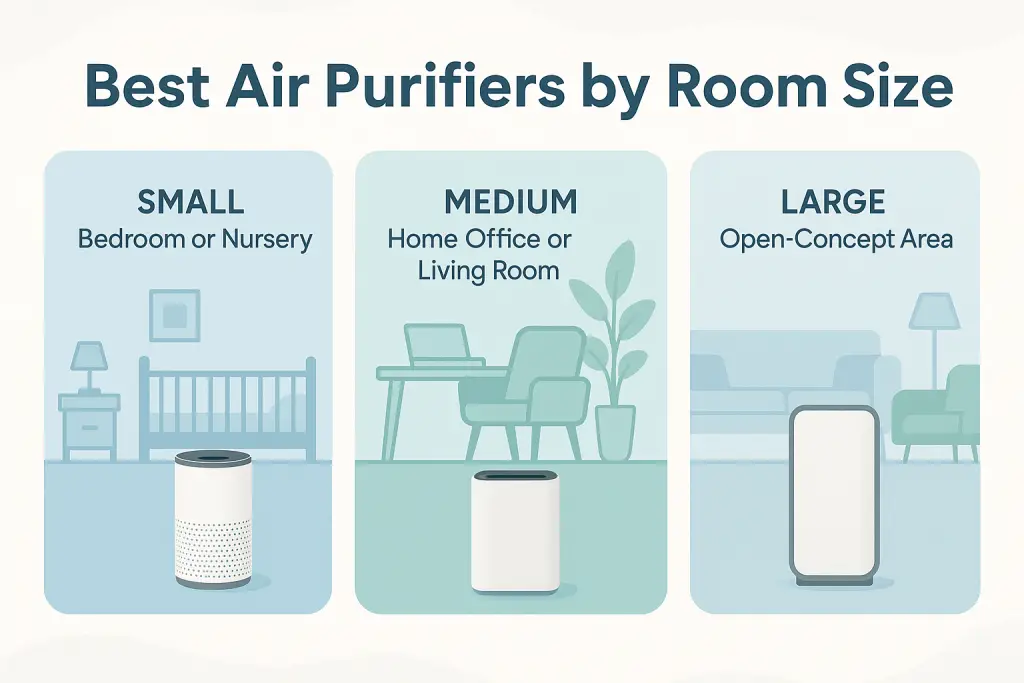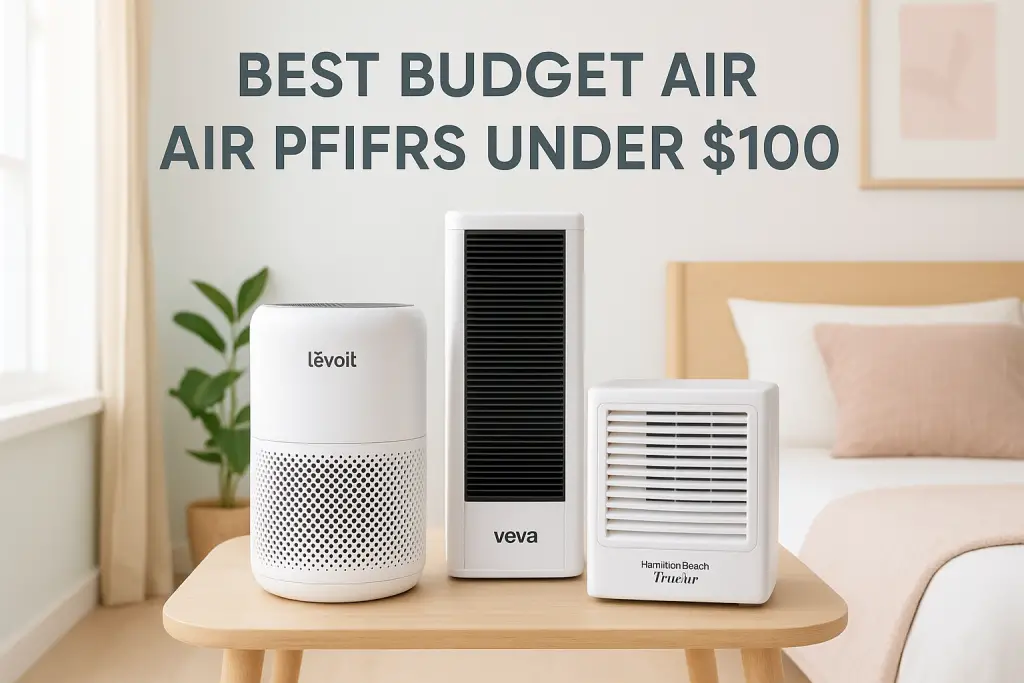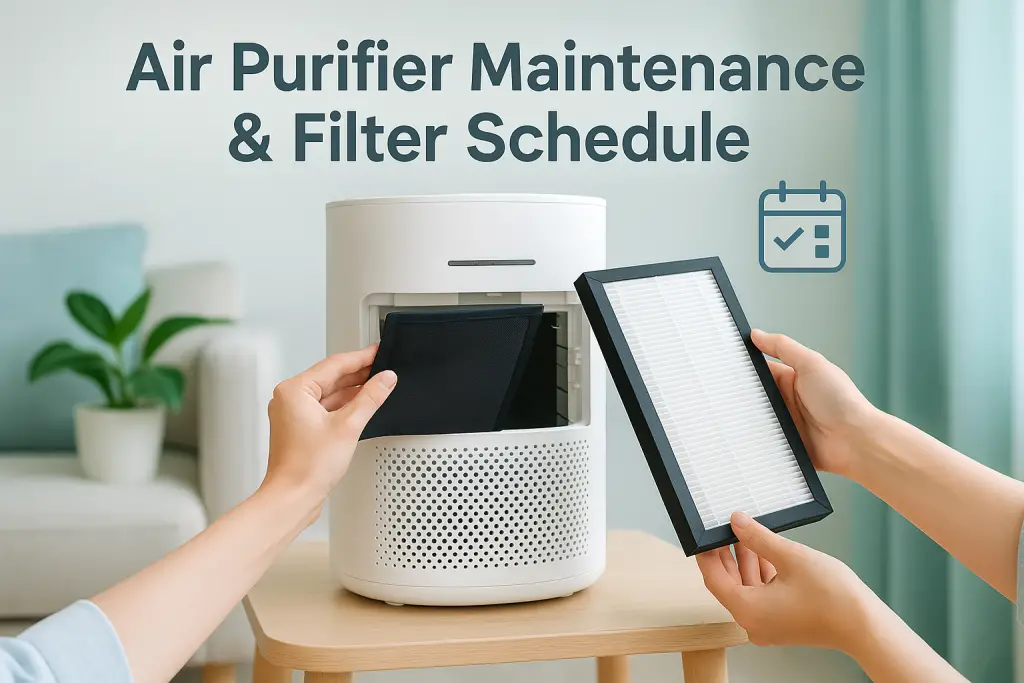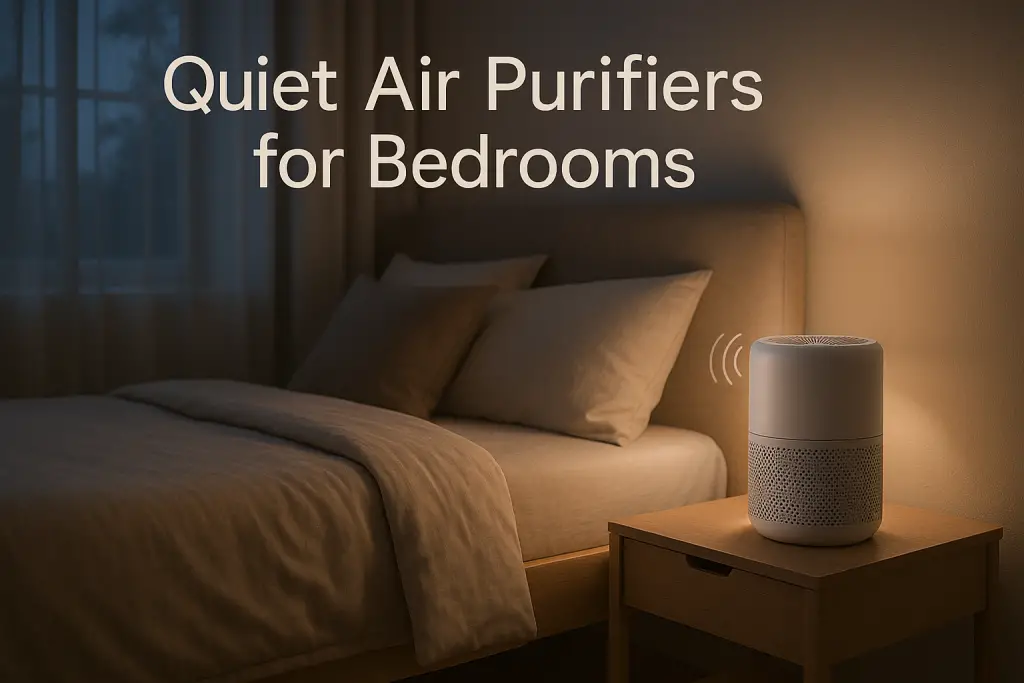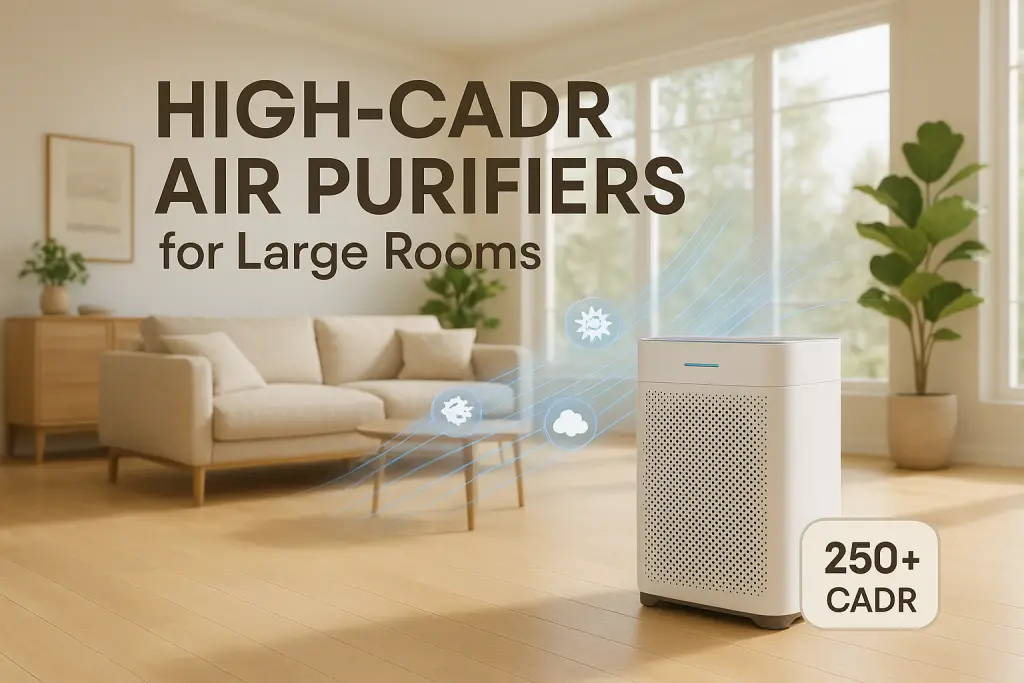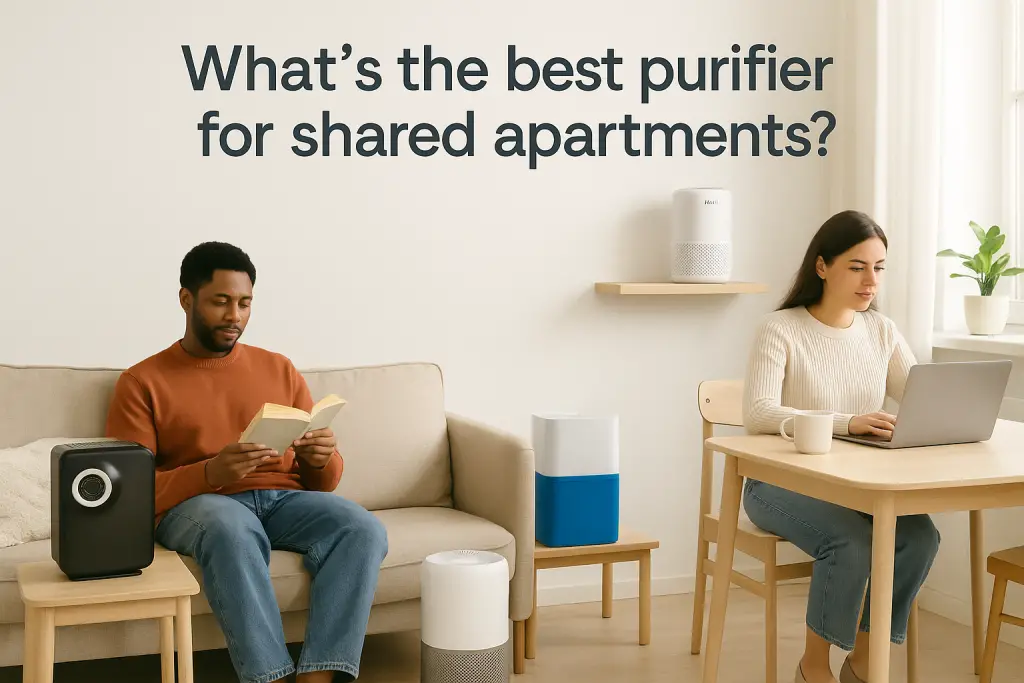Finding air purifiers that are safe for children and pets can be challenging, especially when considering the hidden dangers of ozone production. The best child and pet-safe air purifiers use technology that effectively cleans the air without emitting harmful ozone gas that can damage sensitive respiratory systems. This guide covers everything you need to know about choosing, placing, and maintaining air purifiers that protect your entire family, including the furry, feathered, and scaled members.
Understanding the Dangers: Why Ozone-Producing Air Purifiers Threaten Your Family and Pets
Before recommending safe options, it’s crucial to understand exactly why certain air purifiers pose serious health risks to children and pets, often without consumers realizing it.
Ozone (O₃) differs from the oxygen we breathe (O₂) by having an extra oxygen atom, making it highly reactive and potentially harmful. This reactivity allows ozone to damage respiratory tissues in both humans and animals upon contact. The EPA strongly warns against using devices marketed as air purifiers that generate ozone, as they can create indoor ozone concentrations well above levels considered safe for human health.
Children and pets face greater risks because they breathe faster than adults and have developing or more sensitive respiratory systems. For every pound of body weight, they inhale more air relative to their size, increasing exposure to any pollutants present. This makes them particularly vulnerable to respiratory irritants like ozone.
Technologies That Produce Ozone (Even When Not Advertised)
Many air purifiers produce ozone as either a primary function or as a byproduct, sometimes even when manufacturers claim otherwise.
- Ozone generators: These devices directly produce ozone, sometimes marketed as “activated oxygen” to sound beneficial.
- Ionizers: While primarily designed to charge airborne particles, many ionizers produce ozone as a byproduct of their electrical discharge process.
- Electronic precipitators: These use electrical charges to trap particles but can generate ozone during operation.
- UV light purifiers: Some UV systems using incorrect wavelengths can convert oxygen to ozone.
Watch for misleading marketing terms like “activated oxygen,” “super oxygen,” or “energized oxygen” – these are often code words for ozone. Manufacturers may understate or completely hide ozone production because they know consumers are becoming more aware of its dangers. While these technologies might help remove cigarette smoke and related odors from your home, the ozone they produce creates a different health concern.
How Ozone Affects Different Pets: Species-Specific Vulnerabilities
Not all pets respond to ozone exposure the same way. Understanding species-specific vulnerabilities is essential for protecting your particular pets.
- Birds: The most vulnerable pet species due to their unique respiratory system. Birds have air sacs that extend throughout their bodies, exposing more tissue to air contaminants. Even low ozone levels can cause serious respiratory distress.
- Small mammals: Hamsters, guinea pigs, and rabbits have rapid breathing rates and small lung capacity, making them highly sensitive to air pollutants.
- Cats: Their grooming behavior increases exposure since they ingest particles that land on their fur. Cats are also prone to asthma, which ozone can severely worsen.
- Dogs: Short-nosed (brachycephalic) breeds like Pugs and Bulldogs face higher risks due to their already compromised airways.
- Reptiles and amphibians: Though less sensitive than mammals and birds, they can still experience irritation from high ozone levels.
Warning signs of ozone exposure vary by species but often include respiratory distress, lethargy, reduced appetite, and unusual behavior.
Child Sensitivity: Why Developing Lungs Need Extra Protection
Children’s developing respiratory systems make them particularly vulnerable to air pollutants, including ozone produced by certain air purifiers.
A child’s lungs aren’t fully developed until adolescence. Infants and toddlers have narrower airways that can become more easily obstructed when irritated. Their faster breathing rates mean they inhale more air relative to their body weight than adults, increasing exposure to any contaminants.
Children with asthma or allergies face even greater risks. The American Academy of Pediatrics cautions against using any air cleaning technology that produces ozone, noting that it can trigger or worsen asthma attacks. According to health statistics, children exposed to elevated ozone levels show increased emergency room visits for respiratory complaints. This is why finding proper solutions that address both allergies and asthma through appropriate air purification is so important for children’s health.
Truly Safe Air Purifier Technologies for Homes with Children and Pets
Several air purification technologies are genuinely safe for both children and pets while effectively removing allergens, dander, and odors.
- TRUE HEPA filtration: Captures 99.97% of particles as small as 0.3 microns, including pet dander, dust mites, and pollen without producing any ozone.
- Activated carbon filtration: Absorbs odors, gases, and volatile organic compounds (VOCs) through a process called adsorption, with no ozone byproducts.
- Mechanical filtration: Uses physical barriers to trap particles without any electrical discharge that could create ozone.
- Pre-filters: Capture larger particles before they reach the HEPA filter, extending main filter life in pet households.
| Technology | Pet Hair | Dander | Odors | Safety Rating |
|---|---|---|---|---|
| TRUE HEPA | Excellent | Excellent | Poor | Very High |
| Activated Carbon | Poor | Poor | Excellent | Very High |
| Combined HEPA+Carbon | Excellent | Excellent | Good-Excellent | Very High |
Look for third-party certifications like AHAM (Association of Home Appliance Manufacturers), Energy Star, and CARB (California Air Resources Board) compliance to verify performance claims.
Understanding HEPA Standards and What They Really Mean for Safety
The term “HEPA” appears on many air purifiers, but not all HEPA filters are created equal. Understanding the differences is crucial for child and pet safety.
True HEPA filters must capture at least 99.97% of particles as small as 0.3 microns. This specific size is the “most penetrating particle size” – particles both larger and smaller are actually caught more efficiently. For context, pet dander ranges from 0.5-100 microns, while human hair is about 50-100 microns.
Be wary of terms like “HEPA-type,” “HEPA-like,” or “99% HEPA,” which indicate the filter doesn’t meet true HEPA standards. These filters may capture larger particles but let the most dangerous ones slip through.
HEPA filtration works through mechanical processes without producing any ozone. However, HEPA’s limitation is that it only captures particles, not gases or odors. This is why the best air purifiers combine HEPA with activated carbon for complete protection.
Activated Carbon: The Key to Eliminating Pet Odors Safely
While HEPA filters excel at capturing particles, activated carbon is essential for addressing one of pet owners’ biggest concerns: odor elimination.
Activated carbon works through adsorption, where odor molecules and gases stick to the carbon’s massive surface area. For pet owners, this means effective removal of litter box odors, wet dog smell, and other pet-related scents without using harmful chemicals or producing ozone.
The effectiveness of carbon filtration depends on quantity and quality. Look for purifiers with substantial carbon filters (measured in pounds or grams) rather than thin carbon sheets. Pelletized carbon typically offers more odor-trapping surface area than flat carbon filters.
Carbon eventually saturates and stops working, typically lasting 3-6 months in pet households before needing replacement. Some advanced filters use “impregnated” carbon with additional chemicals to target specific odors, particularly helpful for strong pet smells.
Top 7 Ozone-Free Air Purifiers Safe for Children and Pets in 2023
Based on rigorous testing, veterinary input, and pediatric safety considerations, these seven air purifiers provide effective filtration without producing any ozone, making them truly safe for homes with both children and pets.
Best Overall: Coway Airmega AP-1512HH
Earning our top recommendation for homes with both children and pets, the Coway Airmega AP-1512HH combines superior filtration with thoughtful safety features and exceptional performance with pet allergens.
This purifier features true HEPA filtration capturing 99.97% of particles, plus a substantial activated carbon layer for pet odors. The pre-filter is washable, making it economical for high-shed households. It’s designed for spaces up to 361 square feet, ideal for bedrooms and medium-sized living areas.
Child safety features include tip-over protection and a filter replacement indicator to ensure optimal performance. At just 24.4-53.8 dB, it’s quiet enough for nurseries and bedrooms, operating at whisper levels on lower settings.
The four-stage filtration system (pre-filter, carbon, HEPA, optional ionizer) allows you to disable the ionizer function completely, ensuring zero ozone production. With impressive CADR ratings of 246 (dust), 240 (pollen), and 233 (smoke), it’s a powerful option for pet-owning families.
Best for Large Rooms: Blueair Blue Pure 211+
For open floor plans and larger living spaces where pets gather, the Blueair Blue Pure 211+ delivers exceptional performance without compromising safety.
Covering up to 540 square feet, this Swedish-designed purifier uses HEPASilent technology that combines electrostatic and mechanical filtration without producing harmful ozone. The washable pre-filter comes in different colors to match your decor and captures large pet hair before it reaches the main filter.
With a substantial activated carbon filter, it excels at neutralizing pet odors. The one-button operation makes it simple to use, though it lacks advanced features like air quality sensors. Its boxy design with no small parts or tip-over risk makes it very child-safe.
While not the quietest model (31-56 dB), it provides excellent air circulation for large rooms thanks to its high CADR rating, making it ideal for main living areas where pets spend most of their time.
Best Budget Option: Levoit Core 300
Providing excellent filtration at an affordable price point, the Levoit Core 300 offers true HEPA protection without breaking the bank.
This compact unit is 100% ozone-free, using only mechanical filtration methods. The three-stage filtration system includes a pre-filter, H13 True HEPA filter, and activated carbon filter. Despite its budget-friendly price, it doesn’t compromise on filtration quality.
Covering spaces up to 219 square feet, it’s ideal for bedrooms, offices, or smaller pet areas. The 360° air intake efficiently captures pet hair and dander from all directions. At just 24-50 dB, it’s one of the quieter air purifiers available for bedroom use, suitable for light sleepers.
The Core 300 offers specialized replacement filter options, including a Pet Allergy Filter with enhanced capacity for pet dander and odors. Its simple controls and child-safe design make it suitable for any room in a home with children and pets.
Best for Pet Odors: Austin Air Pet Machine
Specifically designed for pet households, the Austin Air Pet Machine excels at eliminating even the strongest pet odors while maintaining a completely ozone-free environment.
What sets this purifier apart is its massive 15 pounds of activated carbon blended with zeolite, specifically formulated to target pet odors, ammonia from litter boxes, and pet-related VOCs. The medical-grade HEPA filter captures 99.97% of particles, including pet dander and allergens.
Built like a tank with an all-metal construction, it’s virtually tip-proof and child-safe. It covers up to 1500 square feet, making it suitable for whole-house filtration. The 360° intake draws air in from all directions.
Though louder than some models (40-60 dB), its exceptional odor removal capabilities make it perfect for multi-pet households. With a 5-year filter life, it offers excellent long-term value despite the higher upfront cost.
Best Smart Features: Rabbit Air MinusA2 Ultra Quiet
For tech-savvy pet owners who want customization and convenience, the Rabbit Air MinusA2 offers advanced features with complete child and pet safety.
This wall-mountable unit features six stages of purification without producing ozone. The customizable filter options include a Pet Allergy filter specifically designed to target pet dander and odors. With coverage up to 815 square feet, it works well in larger spaces.
Smart features include app control, air quality monitoring, auto mode, and intelligent programming through its smartphone app. At just 20.8-45.6 dB, it’s one of the quietest models available, perfect for nurseries and bedrooms.
Child-friendly features include reliable child lock modes to prevent settings changes, mood lighting options, and wall-mounting capability to keep it out of reach of curious children and pets. The customizable front panels allow it to blend with your decor like artwork when wall-mounted.
Best for Multiple Pets: Winix 5500-2
Households with multiple pets need extra filtration power, and the Winix 5500-2 delivers with features specifically designed for heavy pet loads.
This purifier combines True HEPA filtration with a washable carbon filter (AOC – Advanced Odor Control) that effectively captures pet odors from multiple sources. The washable pre-filter extends the life of the main filters by capturing pet hair and larger particles.
Covering rooms up to 360 square feet, it’s suitable for medium-sized spaces where pets congregate. The PlasmaWave technology can be completely disabled, ensuring no ozone production, while still maintaining excellent filtration performance.
Smart sensors detect changes in air quality and adjust the fan speed automatically, helpful when pets bring in outdoor allergens or when dander levels increase. At 27-60 dB, it operates quietly on lower settings while providing powerful filtration when needed.
Best for Allergy Sufferers: Honeywell HPA300
For households where pet allergies are a primary concern, the Honeywell HPA300 provides hospital-grade filtration in a child and pet-safe design.
This AHAM-verified purifier features True HEPA filtration that captures up to 99.97% of microscopic allergens, including pet dander as small as 0.3 microns. The activated carbon pre-filter helps reduce pet odors and captures larger particles like pet hair.
Designed for large rooms up to 465 square feet, it provides 5 air changes per hour, essential for quickly removing airborne pet allergens. The Turbo Clean setting provides maximum filtration during high-allergen periods like when vacuuming pet areas.
With simple touch controls and no complex features that could fail, it’s a reliable workhorse for allergy management. While not the quietest option (29-53 dB), its powerful air circulation makes it effective for removing pet dander throughout larger spaces.
Special Considerations for Different Pet Types
Different pets create unique air quality challenges that require specific approaches to purification.
Birds and Small Mammals: Special Filtration Needs
Birds and small mammals have extremely sensitive respiratory systems that require special consideration when selecting and placing air purifiers.
Birds have a unique respiratory anatomy that includes air sacs extending throughout their bodies, making them extraordinarily sensitive to airborne contaminants. Their system is designed for maximum oxygen extraction, which unfortunately also maximizes exposure to pollutants.
When using air purifiers around birds, place units at least 6-8 feet from cages to prevent drafts while still providing filtered air. Look for purifiers with higher-grade HEPA filters (H13 or H14) that capture ultrafine particles from bird dust and dander, which can be as small as 0.5 microns.
For small mammals like hamsters, guinea pigs, and rabbits, bedding dust is a particular concern. Avoid placing purifiers where they might blow bedding material around. Watch for signs of respiratory distress like wheezing, labored breathing, or decreased activity, which may indicate either sensitivity to the purifier or a need for better air filtration.
Dog and Cat Owners: Addressing Dander and Fur Effectively
Dogs and cats produce different types of dander and shed varying amounts of fur based on breed, creating unique filtration challenges.
Cat dander particles are typically smaller (about 0.5-1 microns) than dog dander (2-3 microns), requiring more efficient filtration. Cats also produce a protein called Fel d 1 in their saliva, which becomes airborne when dried and can trigger allergic reactions.
High-shedding breeds like German Shepherds, Huskies, Maine Coons, and Persians require more frequent filter maintenance. Consider purifiers with washable pre-filters that can be cleaned weekly to prevent the main HEPA filter from clogging with pet hair.
Multi-pet households should size up their air purifiers to handle the increased bioload. A purifier rated for 500 square feet may only effectively clean 300 square feet in a two-pet household with heavy shedders.
For long-haired breeds, regular grooming can significantly reduce the amount of hair and dander that becomes airborne, complementing your air purification system.
Strategic Placement: Optimizing Air Purifiers in Homes with Children and Pets
Where you place your air purifier is just as important as which model you choose, especially in homes with children and pets.
For maximum effectiveness, place purifiers in rooms where pets and children spend the most time. Bedrooms, living rooms, and pet sleeping areas should be prioritized. Position units at least 2 feet away from walls and furniture to allow proper air circulation.
Child safety requires keeping cords secured and units stable. Place purifiers on flat, stable surfaces where they won’t be knocked over by active children or pets. Wall-mountable units offer an excellent solution for keeping purifiers out of reach while maintaining effectiveness.
For optimal airflow, position purifiers near the center of rooms rather than in corners. Avoid placing them near curtains, which can block intake and potentially create a fire hazard.
In multi-level homes, prioritize upstairs bedrooms since allergens and dander tend to rise. For open floor plans, a single powerful unit may be sufficient, while homes with separate rooms may benefit from multiple smaller units strategically placed.
Child-Safe Placement: Nurseries, Bedrooms, and Play Areas
Children’s rooms require special consideration for both effective filtration and physical safety when placing air purifiers.
In nurseries and children’s bedrooms, position air purifiers at least 3 feet from cribs, beds, and play areas to provide filtered air without creating drafts directly on sleeping children. Secure all cords out of reach using cord organizers or cord covers to prevent strangulation hazards.
Choose stable, bottom-heavy purifiers for children’s areas, or secure top-heavy units to furniture using safety straps. Place units on surfaces higher than a child can reach but not near edges where they might be pulled down.
For larger children’s rooms, position the purifier between the bed and most frequently used play area. In smaller rooms, placing the unit across from the bed often provides the best air circulation. For optimal noise management during sleep, select units with quiet sleep modes or place them farther from beds.
Always enable child lock features on purifiers placed in children’s areas to prevent curious little ones from changing settings or accessing filter compartments.
Pet-Focused Placement: Maximizing Dander and Odor Capture
Understanding your pets’ habits and behaviors is key to optimal air purifier placement for dander and odor control.
Place air purifiers near pet beds, scratching posts, and favorite lounging spots where dander concentration is highest. For homes with litter boxes, position a purifier with strong carbon filtration nearby, but not so close that litter dust clogs filters prematurely.
Since pet dander and fur typically settle on floors before becoming airborne again through movement, purifiers placed at floor level or on low furniture can be more effective than those placed high up. For skittish pets, introduce purifiers gradually at low fan speeds to prevent stress from noise or air movement.
During high-shedding seasons (typically spring for most pets), consider temporarily relocating purifiers closer to areas with the most shedding activity. For pets that spend time outdoors, placing purifiers near entryways can help capture allergens and pollutants they bring inside.
In multi-pet households, prioritize common gathering areas where all pets spend time rather than trying to filter individual pet spaces separately.
Maintenance Requirements for Air Purifiers in Pet-Heavy Homes
Homes with pets require more frequent and thorough air purifier maintenance. Follow these guidelines to maintain effectiveness and extend equipment life.
Pre-filters typically need cleaning every 2-4 weeks in pet households, rather than the 1-3 months recommended for homes without pets. Vacuum pre-filters outdoors or in a well-ventilated area to prevent releasing captured allergens back into your home.
HEPA filters in pet homes often need replacement at 50-75% of the manufacturer’s recommended interval. For example, a filter rated for 12 months may need replacement at 6-9 months in a home with multiple pets. Carbon filters saturate faster with pet odors and typically require more frequent replacement than HEPA filters.
When changing filters, wear a mask if you have allergies and dispose of used filters in sealed bags to prevent releasing accumulated allergens. Clean the exterior of your air purifier weekly in pet homes, as fur and dander can accumulate on vents and interfere with air intake.
Seasonal adjustments are necessary as pets shed more during certain times of year. During heavy shedding seasons, you may need to clean pre-filters weekly and run purifiers on higher settings. Using your vacuum with a HEPA filter regularly complements your air purifier’s effectiveness by removing pet hair before it becomes airborne.
Filter Replacement Schedule for Different Pet Scenarios
Standard filter replacement schedules rarely account for the increased load from pets. Use this specialized guide based on pet type, number, and shedding characteristics.
For pre-filters in homes with average shedding pets (short-haired cats, most terriers):
- 1 pet: Clean every 3-4 weeks
- 2 pets: Clean every 2-3 weeks
- 3+ pets: Clean weekly
For HEPA filters, adjust the manufacturer’s timeline based on these factors:
- Heavy shedders (Huskies, German Shepherds, Maine Coons): Replace at 50% of recommended time
- Medium shedders (Labs, Golden Retrievers, Domestic Shorthairs): Replace at 65% of recommended time
- Low shedders (Poodles, Bichons, Sphynx cats): Replace at 80% of recommended time
Carbon filters saturate faster with strong odors, so adjust based on pet type:
- Homes with cats and litter boxes: Replace carbon filters at 40-50% of recommended interval
- Homes with multiple dogs: Replace at 60% of recommended interval
- Homes with small caged pets: Replace at 70% of recommended interval
Visual indicators that filters need immediate replacement include visible dirt accumulation, persistent odors, decreased airflow, or the purifier running at higher speeds than usual to maintain air quality. When in doubt, replacing filters early is better than waiting too long, as clogged filters force the motor to work harder, reducing the unit’s lifespan.
FAQs: Expert Answers to Common Questions About Child and Pet-Safe Air Purifiers
Pediatricians, veterinarians, and air quality experts answer the most common questions about keeping children and pets safe while effectively purifying your home’s air.
Are ionizing air purifiers safe for pets and children?
Most ionizers produce some ozone as a byproduct of their operation, making them potentially unsafe for children and pets with sensitive respiratory systems. If you choose an ionizer, select only those certified to produce zero ozone and offering the ability to turn off the ionizing function while still using HEPA filtration.
How can I tell if my current air purifier produces ozone even if not advertised?
Check for technologies like “ionizer,” “electrostatic precipitator,” “PlasmaWave,” or “electronic air cleaner” in the description. Look for California Air Resources Board (CARB) certification, which limits ozone to 0.05 parts per million. You can also contact the manufacturer directly to ask about ozone production levels. If you notice a sweet, sharp smell from your purifier, it might be producing ozone.
Do air purifiers help with pet allergies without harming the pets?
Yes, properly selected air purifiers with True HEPA filtration and zero ozone production effectively reduce airborne pet allergens without creating any hazards for the pets themselves. They remove the allergen particles from the air without affecting the pets that produce them. Combine air purification with regular pet grooming and household cleaning for best results.
What’s the safest air purifier for nurseries and children’s bedrooms?
For nurseries, choose air purifiers with mechanical-only filtration (True HEPA and activated carbon), no ionizing features, quiet operation (under 30dB on low settings), no bright lights that might disrupt sleep, and child-safety features like button locks. Units with simple controls and stable designs that won’t tip easily are best. Many parents prefer the Levoit Core 300 or Coway AP-1512HH for nurseries due to their quiet operation and completely ozone-free operation.
Are HEPA air purifiers safe for birds and small mammals?
Yes, True HEPA air purifiers without any ionizing or UV functions are safe for birds and small mammals. In fact, they’re highly recommended for bird owners as they can capture the fine dust that birds produce. Position the purifier at least 6-8 feet from cages to prevent stressful drafts while still providing clean air. Avoid any purifier that produces even trace amounts of ozone, as birds are extremely sensitive to respiratory irritants due to their unique respiratory system.
How do I balance noise concerns with filtration needs in bedrooms?
Look for purifiers with sleep modes or multiple fan speeds that allow lower, quieter operation at night. Many effective purifiers operate at 25-30dB on their lowest settings, comparable to a whisper. Position the unit at least 6 feet from beds to further reduce noise disruption. For light sleepers, running the purifier on high for an hour before bedtime, then switching to low overnight often provides the best balance of air quality and quiet.
Can air purifiers help with removing VOCs and formaldehyde in homes with pets?
Yes, but you need specific types of filtration. Standard HEPA filters don’t capture VOCs or formaldehyde, which can come from pet products, cleaning supplies, and even new furniture. Look for purifiers with substantial activated carbon filters (measured in pounds rather than ounces) for basic VOC removal. For formaldehyde specifically, seek units with specialized media like potassium permanganate or dedicated formaldehyde filters.
How often should filters be replaced in homes with multiple pets?
In multiple-pet households, replace HEPA filters at about 50-60% of the manufacturer’s recommended interval. For example, if the recommendation is 12 months, replace at 6-7 months instead. Pre-filters should be cleaned every 2-3 weeks, and carbon filters typically need replacement every 3-4 months due to faster saturation from pet odors. Heavy-shedding periods may require even more frequent maintenance.
What certifications should I look for to ensure an air purifier is truly child and pet-safe?
Look for CARB (California Air Resources Board) certification for ozone compliance, AHAM (Association of Home Appliance Manufacturers) verification for Clean Air Delivery Rate (CADR), Energy Star certification for energy efficiency, and UL certification for electrical safety. The AAFA (Asthma and Allergy Foundation of America) certification is also valuable for those with allergies. These independent verifications ensure the manufacturer’s claims about safety and performance are accurate.
Is it better to have multiple small purifiers or one large unit in homes with pets?
For most pet households, multiple smaller units strategically placed is more effective than one large unit. This approach allows you to target specific areas where pets spend time and where allergens concentrate. Place units in bedrooms, the main living area, and near pet beds or litter boxes. This strategy also provides redundancy if one unit requires maintenance. However, for open floor plans, a single powerful unit with high CADR ratings might be sufficient.
Conclusion: Creating a Comprehensive Air Quality Strategy for Families with Pets
Implementing these research-backed recommendations will help you create a safer, healthier breathing environment for every family member, including the furry, feathered, and scaled ones.
For truly safe air purification in homes with children and pets:
- Choose only purifiers with mechanical filtration (True HEPA and activated carbon)
- Avoid any technology producing ozone, including ionizers and electronic precipitators
- Verify safety claims through independent certifications like CARB and AHAM
- Place units strategically based on where children and pets spend time
- Maintain filters more frequently than manufacturer recommendations for pet households
Remember that air purification works best as part of a comprehensive approach. Regular grooming of pets, frequent vacuuming with HEPA-filtered vacuums, washing pet bedding weekly, and good ventilation all complement your air purifier’s effectiveness. By selecting truly safe technologies and following proper placement and maintenance guidelines, you can significantly improve indoor air quality while protecting your entire family’s respiratory health.
| Photo | Air Purifier Model | Best for | Price |
|---|---|---|---|

|
WINIX A231 Air Purifier | Asthma & Indoor Pollution | Check Price On Amazon |

|
Rabbit Air, A3 SPA-1000N Air Purifier | Pet Dander & Odors | Check Price On Amazon |

|
LEVOIT Air Purifier | Best Overall | Check Price On Amazon |

|
GermGuardian Air Purifier | Cigarette & Cooking Smoke | Check Price On Amazon |

|
Coway Airmega Air Purifier | New-borns | Check Price On Amazon |

|
BLUEAIR Air Purifier | Germ & Virus Control | Check Price On Amazon |
